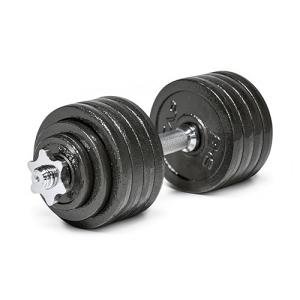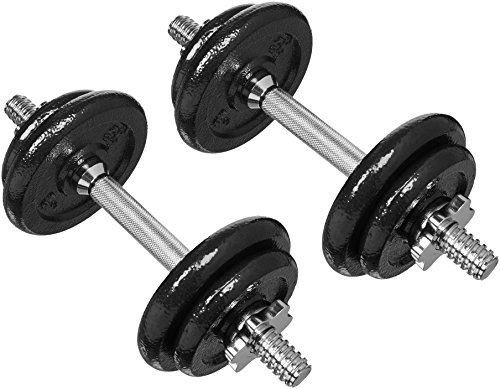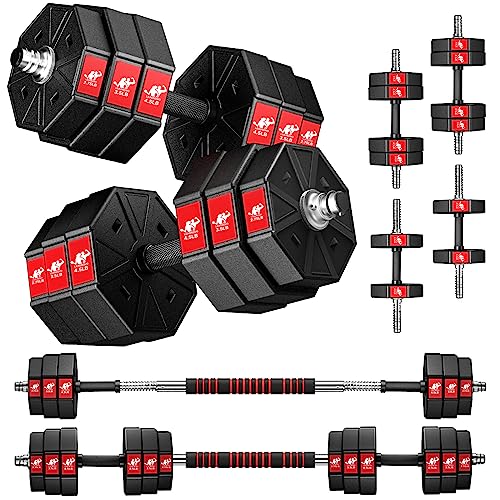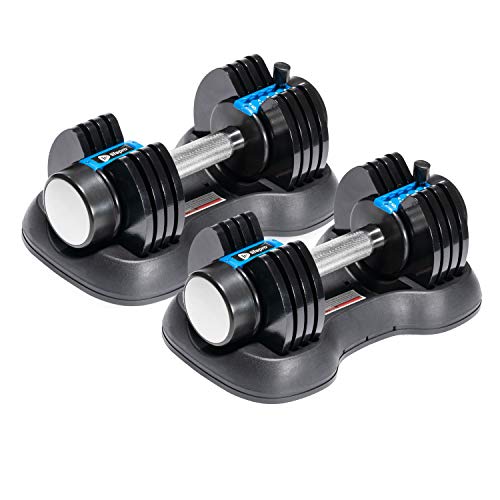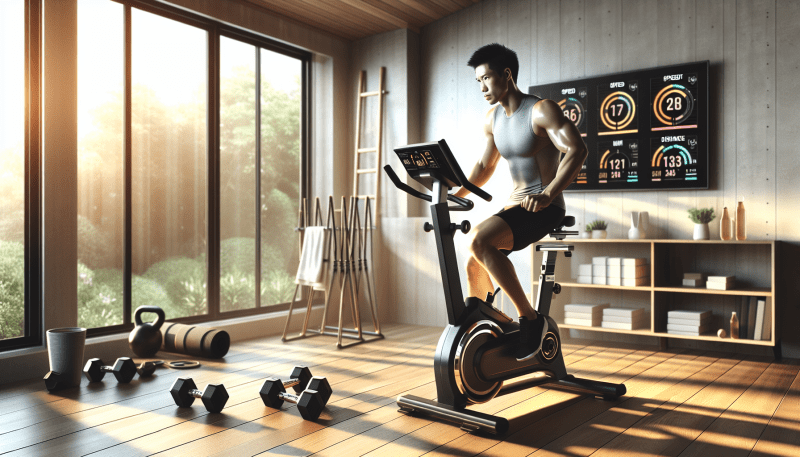Introduction
Chest training is a cornerstone of any strength-focused workout routine, and the right exercises can lead to impressive gains. Among the various exercises available, the dumbbell press and bench press are two of the most popular and effective for building chest muscles. While both exercises target similar areas, they each have their unique advantages. In this article, we'll explore the difference between the two, and we'll also provide a weekly dumbbell-focused chest workout routine to help you maximize your results.
Section 1: Dumbbell Press vs. Bench Press – Which is Better?
Dumbbell Press
The dumbbell press is a free-weight exercise that involves pressing a pair of dumbbells upwards while lying on a bench. The main advantage of the dumbbell press is that it allows for a greater range of motion and engages more stabilizing muscles than the traditional bench press. Here’s why it’s beneficial:
- Range of Motion: Dumbbells allow for a deeper stretch and full range of motion, which can enhance muscle growth.
- Muscle Activation: The use of dumbbells forces each arm to work independently, which can help correct imbalances and promote symmetrical development.
- Stabilizing Muscles: Because you’re using dumbbells, your chest, shoulders, and triceps work harder to stabilize the weights, leading to better overall muscle engagement.
Bench Press
The bench press, whether performed with a barbell or dumbbells, is a staple of chest training. While the barbell version is more common, the dumbbell bench press has its own set of benefits:
- More Control: With a barbell, both arms are locked into the same motion, which can sometimes limit the effectiveness of the movement if your arms are imbalanced.
- Power Training: The bench press allows you to lift heavier weights, which is ideal for maximizing strength and muscle mass in a controlled manner.
- Focus on Strength: This lift is often more focused on building strength, especially when performed with
Key Differences
- Stability: The dumbbell press requires more balance and stabilizing muscle activation compared to the bench press, which might be better suited for maximal strength gains with the barbell version.
- Range of Motion: The dumbbell press allows for a more natural range of motion, enabling a deeper stretch and greater contraction of the chest muscles. The bench press, while effective, may limit your range of motion due to the fixed barbell.
- Injury Prevention: The independent nature of the dumbbell press helps reduce the risk of injuries that can occur from an imbalance in strength between your two sides.
Which Should You Choose?
Both exercises have their place in a chest training routine. For overall chest development, you can include both the dumbbell press and the bench press in your workout. If you're looking to build muscle mass and strength, alternating between the two can help you maximize your results. The dumbbell press can be used to target more stabilizer muscles and achieve a fuller range of motion, while the bench press is excellent for building raw strength and allowing you to lift heavier loads.
Section 2: Weekly Dumbbell Chest Workout Routine
Now that we've discussed the key differences between the dumbbell press and the bench press, let's take a look at a weekly chest workout using dumbbells to optimize muscle growth. This routine can be done 2-3 times a week for maximum results, ensuring that you’re targeting the chest from all angles.
Day 1: Focus on Strength and Power
- Dumbbell Bench Press – 4 sets of 6-8 reps
Focus on using a heavy weight for this compound movement to build overall strength in the chest. Aim for a weight that challenges you but allows you to complete the full range of motion with good form. - Incline Dumbbell Press – 3 sets of 8-10 reps
Target the upper chest with the incline press. It’s important to adjust the incline to avoid stress on the shoulders, aiming for a 30-45 degree angle. - Dumbbell Chest Flyes – 3 sets of 10-12 reps
The dumbbell fly targets the chest's outer portions and is great for building muscle definition. Perform the fly with a controlled, slow motion to maximize the stretch and contraction at the top. - Push-Ups – 3 sets of 15-20 reps
Finish off the workout with some bodyweight push-ups to fully fatigue the chest muscles. For an added challenge, you can place your feet on an elevated surface.
Day 2: Focus on Hypertrophy and Endurance
- Flat Dumbbell Press – 4 sets of 10-12 reps
Use moderate weight to push yourself to fatigue in the 10-12 rep range. This rep range is ideal for muscle growth (hypertrophy), and the slightly lighter weights allow for greater focus on form and activation. - Decline Dumbbell Press – 3 sets of 8-10 reps
The decline press is a great variation to target the lower chest. Adjust the bench to a decline angle (around 15-30 degrees) for optimal targeting. - Dumbbell Pullover – 3 sets of 10-12 reps
The dumbbell pullover is an excellent exercise for stretching the chest while also working the back. Make sure to control the movement through a full range of motion. - Dumbbell Chest Fly (Flat or Incline) – 3 sets of 12-15 reps
High-rep flyes are great for finishing off the chest and improving muscle definition. Perform this with a moderate weight and focus on the stretch at the bottom and the squeeze at the top.
Section 3: Recovery and Optimization
Effective recovery is essential for muscle growth, especially when training the chest with high volume and intensity. After a demanding chest workout, recovery strategies such as nutrition, rest, and foam rolling can significantly enhance your muscle-building efforts.
Whey Protein for Chest Muscle Recovery
Whey protein is a popular post-workout supplement that helps in muscle recovery. It’s quickly absorbed by the body, delivering essential amino acids to repair muscle fibers that were broken down during the workout. After a chest session, consuming a high-quality protein shake within 30 minutes will promote faster recovery and muscle growth.
Post-Workout Foam Rolling
Foam rolling is a recovery technique that can reduce muscle tightness, improve blood flow, and prevent soreness after intense chest workouts. Focus on the chest, shoulders, and triceps areas after your workout. Foam rolling helps release muscle tension, which can reduce the likelihood of injury and enhance recovery.
Rest & Sleep
Proper rest and sleep are often overlooked but are essential components of muscle growth. Aim for at least 7-9 hours of quality sleep each night to allow your muscles to repair and grow. Additionally, taking rest days between chest workouts will help prevent overtraining and promote better long-term gains.
Section 4: Additional Tips for Chest Development
- Progressive Overload: Gradually increase the weight you use in your dumbbell exercises to ensure continued muscle growth. Aim to increase the weight by small increments each week.
- Mind-Muscle Connection: Focus on contracting the chest muscles during every repetition, ensuring that you’re fully engaging your pectorals rather than relying on other muscle groups.
- Variation: Changing up your exercises every 4-6 weeks will prevent plateaus and keep your workouts interesting. Try rotating between flat, incline, and decline bench press variations to target different areas of the chest.
Conclusion
Whether you choose to focus on the dumbbell press or the bench press, both are essential movements for building a strong, defined chest. You can maximize muscle growth and strength by incorporating these exercises into a well-structured weekly workout routine. Don't forget to focus on recovery through proper nutrition, foam rolling, and rest to optimize your results. Stick to the plan, stay consistent, and watch your chest development soar.
- For broader fitness goals that tie into chest workouts, check out our Strength Workout Guide for Different Fitness Goals.
- If you’re looking for equipment recommendations, be sure to explore our Best Dumbbells for Home and Gym Use for a variety of options tailored to your workout needs.
- Need help setting up your home gym? Read our article on how to Set Up the Perfect Home Gym for Any Budget, ensuring you have the right setup for effective chest training.

